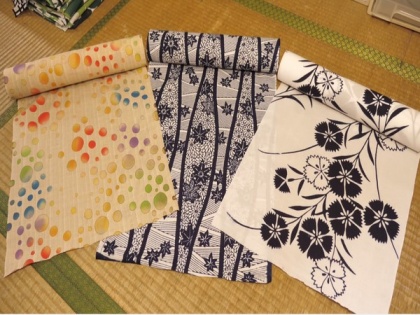Japan preserves traditional hand-dyeing skills
By ANI | Published: July 16, 2021 02:54 PM2021-07-16T14:54:34+5:302021-07-16T15:05:02+5:30
The traditionally dyed fabrics are fluttering softly as they are hung to dry. These beautifully designed materials will be used later to make "Yukata" Japanese casual kimono.

Japan preserves traditional hand-dyeing skills
The traditionally dyed fabrics are fluttering softly as they are hung to dry. These beautifully designed materials will be used later to make "Yukata" Japanese casual kimono.
This traditional dyeing workshop in Tokyo's Edogawa Ward has been in business for over 100 years. They use a 300 year-old technique of hand-dyeing called "Chusen", which means pouring dye, which originated in the early Edo Period.
Takumi Ito, owner of Traditional Dyeing Factory said: "My grandfather started this workshop in this location after the war. Our technique is called "Chusen", and is divided into four stages. First of all we acquire white plain fabrics, next we draw patterns, and we apply colours and adhesives, and finally, we rinse and remove the mask and adhesive in a water bath then it is dried and hanged.
Unlike machine printing, this method dyes the threads of the fabric, rather than just the surface of the cloth. This allows superimposition of delicately illustrated images, refined expression of colour gradations, and double-sided reproduction of images.
Most importantly, no two pieces of dyed fabric are exactly alike, producing subtle taste variations in every dyeing job. Finally, drying takes place outside on the roof under the natural sun.
This shop in Tokyo specializes in selling traditional dyed fabric that can be tailored later into "Yukata".
The selling season begins each year in April and reaches its peak between July and August when many summer festivals take place.
Fumio Ogawa, the store manager said: "Earlier, Yukata was used as a bathrobe in the hot sauna room, but later people start wearing it while going out. What was regarded as private wear is now accepted as fashionable wear and many people can be seen wearing it during the summer festivals, fireworks and other events."
Mastering traditional dyeing takes many years. With Japanese artisan crafts passed to generations, beautiful "Yukata" can be still seen in many places across Japan.
( With inputs from ANI )
Disclaimer: This post has been auto-published from an agency feed without any modifications to the text and has not been reviewed by an editor
Open in app